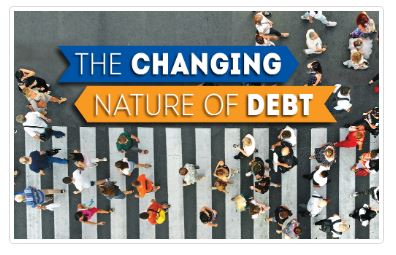2019 December Newsletter
December is here which marks the official start to summer. Unfortunately, the bush fire season is already underway. We would like to take this opportunity to express our heartfelt thanks to the firefighters, emergency services personnel and community members who have been working tirelessly to save lives and property.
After keeping interest rates on hold at 0.75 per cent in November, Reserve Bank Governor Philip Lowe said in a speech he would only consider unconventional measures to stimulate the economy if rates fell to 0.25 per cent. He ruled out negative interest rates but said he might consider buying government bonds.
Economic activity remains patchy. The Reserve Bank forecasts Australia’s economy will stay flatter for longer with growth of 2.25 per cent this year rising to 2.75 per cent by the end of 2020. Business and consumer confidence remain weak, which was reflected in a 0.2 per cent decline in retail sales in the year to September, the biggest fall in 28 years. New vehicle sales followed the trend, down 9.1 per cent in the year to October, the biggest fall in a decade. Residential building was also down, by 10.6 per cent in the year to September, the biggest fall in 18 years. Unemployment rose slightly from 5.2 per cent to 5.3 per cent in October as the number of people in work fell for the first time in 17 months.
On a brighter note, Australia trade surplus rose for the 21st successive month in September, as our annual trade surplus with China hit a new record of $67.3 billion. Our exports have been supported by the weaker Aussie dollar which eased in November from US69c to US67.7c.
Our retirement system: great, but room for improvement
 You could be forgiven for thinking Australia’s superannuation system is a mess. Depending who you talk to, fees are too high, super funds lack transparency and Governments of all political persuasions should stop tinkering.
You could be forgiven for thinking Australia’s superannuation system is a mess. Depending who you talk to, fees are too high, super funds lack transparency and Governments of all political persuasions should stop tinkering.Yet according to the latest global assessment, Australia’s overall retirement system is not just super, it’s top class.
According to the 11th annual 2019 Melbourne Mercer Global Pension Index, Australia’s retirement system ranks third in the world from a field of 37 countries representing 63 per cent of the world’s population. Only the Netherlands and Denmark rate higher.i
What we’re getting right
While super is an important part of our retirement system, it’s just one of three pillars. The other two pillars being the Age Pension and private savings outside super.Writing recently in The Australian, Mercer senior partner, David Knox said one of the reasons Australia rates so highly is our relatively generous Age Pension. “Expressed as a percentage of the average wage, it is higher than that of France, Germany, the Netherlands, the UK and the US.”ii
As for super, we have a comparatively high level of coverage thanks to compulsory Superannuation Guarantee payments by employers which reduces reliance on the Age Pension. In fact, Knox says Australia is likely to have the lowest Government expenditure on pensions of any OECD country within the next 20 years.
Superannuation assets have skyrocketed over the last 20 years from 40 per cent of our gross domestic product (GDP) to 140 per cent. “A strong result as funds are being set aside for the future retirement benefits of Aussies,” says Knox. Even so, on this count we lag Canada, Denmark, the Netherlands and the US.
Room for improvement
For all we are getting right, the global report cites five areas where Australia could improve:- Reducing the Age Pension asset test to increase payments for average income earners
- Raising the level of household saving and reducing household debt
- Require retirees to take part of their super benefit as an income stream
- Increase the participation rate of older workers as life expectancies rise
- Increase Age Pension age as life expectancies rise.
Since 1 January 2017, the amount of Age Pension a person receives reduces by $3 a fortnight for every $1,000 in assets they own above a certain threshold (singles and couples combined).iii
Other suggested improvements, such as increasing the age at which retirees can access the Age Pension, present challenges as they would be deeply unpopular.
The Retirement Income Review
One roadblock standing in the way of ongoing improvements to our retirement system is reform fatigue.In recent years we have had the Productivity Commission review of superannuation, the banking Royal Commission which included scrutiny of super funds, and currently the Retirement Income Review.
The Retirement Income Review will focus on the current state of the system and how it will perform as we live longer. It will also consider incentives for people to self-fund their retirement, the role of the three pillars, the sustainability of the system and the level of support given to different groups in society.
The fourth pillar
One issue that the Government has ruled out of the Review is the inclusion of the family home in the Age Pension assets test.Australia’s retirement income system is built around the assumption that most people enter retirement with a home fully paid for, making it a de facto fourth pillar of our retirement system.
With house prices on the rise again in Sydney and Melbourne and falling levels of home ownership, there are growing calls for more assistance for retirees in the private rental market.
The big picture
Despite the challenge of ensuring a comfortable and dignified retirement for all Australians, it’s worth pausing to reflect on the big picture. The Global Pension Index is a reminder of how far we have come even as we hammer out ways to make our retirement system even better.If you would like to discuss your retirement income plan, give us a call.
i https://info.mercer.com/rs/521-DEV-513/images/MMGPI%202019%20Full%20Report.pdf
ii https://www.theaustralian.com.au/commentary/our-retirement-system-is-far-from-perfect-but-its-still-better-than-most/news-story/d3db43e68b3b93d8c6d6e8a8c17a491d?btr=4ff6fe5e96c92f060a779127475fa258
iii https://guides.dss.gov.au/guide-social-security-law/4/2/3
The changing nature of debt
 when it comes to household debt.i With the present-buying, holiday-taking season nigh, millions of Australians could soon find themselves sinking even deeper in the red.
when it comes to household debt.i With the present-buying, holiday-taking season nigh, millions of Australians could soon find themselves sinking even deeper in the red.Older readers may remember a time when credit was hard to come by and people were cautious about going into debt. But those days are long gone, as our appetite for credit and the way we access it, is evolving.
How did we get here?
In 2016, when the ABS last investigated household debt, the average Australian household owed almost $170,000. This year, Australians household-debt-to-income ratio hit a new record. It reached almost 200 per cent, meaning we spend almost twice as much as we earn.iiThe start of the easy-credit revolution can be dated to the introduction of Bankcard in 1974. Social, economic, educational, property market and technological changes over the last 45 years have resulted in both a growing pool of lenders and an increasing willingness among Australians to take on debt.
To be fair, much of this is ‘good debt’ – to buy a home or appreciating/income producing assets such as investment properties or shares. Also, some of it is student debt, incurred to get what is usually an income-boosting qualification.
That noted, it’s also the case that Australians have become much more relaxed about purchasing depreciating assets, such as cars, and fleeting pleasures, such as restaurant meals and holidays, using other people’s money. Money that then has to be repaid, typically at high rates of interest.
The buy now, pay later hazard
While warnings about credit card debt appear to be getting through to consumers, new debt traps are emerging.In 2018, an ASIC report found Australians had a collective credit card debt of $45 billion and were paying interest on over $30 billion of that balance, as well as shelling out $1.5 billion in fees annually. Almost one in five consumers surveyed said they felt overwhelmed by their credit card debt load.iii
Perhaps that is why many Australians, especially younger and lower-income ones, are bypassing credit cards for buy-now-pay-later (BNPL) digital payment methods such as Afterpay and Zip Pay.
A recent Roy Morgan survey found that almost 2 million Australians used this type of credit in the year to September 2019.iv A 2018 ASIC report found Australians had $903 million in BNPL debt and that figure is almost certainly higher now, given the increased uptake in 2019. v
How does BNPL work?
Afterpay and its competitors allow consumers to buy now and, in theory, pay only the purchase amount later. That is, access zero-interest credit and pay no fees. That sounds good but, inevitably, there’s a catch.If users fail to make the required payments by the due date, they incur hefty late-payment charges. In 2018, Afterpay reported that late fees made up 24 per cent of its annual income.vi Unsurprisingly, there’s growing concern that some Australians are adding BNPL debts to credit card and payday loan debts and getting deeper into financial strife in the process.vii
No free lunches, even at Christmas
Credit can be used wisely or unwisely. Taking out a mortgage makes sense if it means your family has a place to live (and you are likely to make a capital gain). Or getting a car loan so you can get to work. Credit may also be helpful to manage cash-flow issues during periods such as the festive season when your expenses are larger than usual, provided you can repay the debt in full in the short term.Credit almost always involves interest payments, fees or some combination of both. Before pulling out your credit card at the cash register in the coming weeks, consider whether it’s within your budget and you can afford to repay what is likely to be a short-lived spending buzz.
If you are feeling concerned about your level of debt, please give us a call to plan a way forward.
i https://www.abc.net.au/news/2019-10-18/household-debt-leaves-australians-working-longer-spending-less/11608016
ii https://www.abc.net.au/news/2019-03-28/australian-household-wealth-down-260-billion-in-december-quarter/10950242
iii https://www.abc.net.au/news/2018-07-04/1-in-6-credit-card-users-struggle-under-mountain-of-debt/9936826
iv http://www.roymorgan.com/findings/8191-buy-now-pay-later-september-2019-201911040100
v https://www.abc.net.au/news/2018-11-28/asic-reviews-afterpay-and-buy-now-pay-later-schemes/10561232
vi https://www.abc.net.au/news/2018-08-24/afterpay-late-fees-24pc-income-asic-loophole-credit/10156902
vii https://thenewdaily.com.au/money/consumer/2018/11/20/afterpay-debt-trap/
12 tips for Christmas
 If five golden rings and a whole menagerie of birds sounds like it might blow the budget this year, then perhaps the classic carol needs a rewrite. That’s why we’ve put together a list of hot tips to make the gift-giving season a breeze without scorching a hole in your hip pocket.
If five golden rings and a whole menagerie of birds sounds like it might blow the budget this year, then perhaps the classic carol needs a rewrite. That’s why we’ve put together a list of hot tips to make the gift-giving season a breeze without scorching a hole in your hip pocket.1. Make a list
Before you even step foot in your local shopping mall, make a comprehensive list. That goes for all the people you plan on giving presents to, as well as all the decorations and food supplies you’ll need. The more specific you are the better.2. Check it twice and set your budget
Once the list is done check it again and cross off any unnecessary items. Then proceed to set a maximum cost against each item line. If you’re rigorous with this, you might even find your Christmas budget comes in at a surplus.3. Shop around
Shopping around can save a lot of money. And these days its easier than ever as you can do most of the work online. The trick is that you need to start your research early and not leave all your shopping the last minute. There’s no point buying a bunch of gifts nobody even wants in a drastic credit card frenzy.4. DIY
There’s nothing better than a home-made gift. It shows the receiver that you really care and they’re usually cheaper.Making home-made gifts can also be a really great way to bond with other family members if you do it as a group. It’s what we in finance call a ‘win-win’.
5. Shop with purpose...
Not only do you need a list when you shop. You also need a plan. It will inevitably take you more than one trip to the shops to get everything you need, so aim to buy the big things first. This way you’ll know what you have to play around with for the smaller ticket items. Inevitably some of these may not seem quite as important once the bigger ones are accounted for.6. Don’t shop for yourself
Easier said than done we know. But try to avoid buying a whole bunch of stuff for yourself then having nothing left for your other purchases.7. Track your spending
Tracking your spending as you shop is vital – and these days its easier than ever, with apps like The Christmas List, which helps budget and track your Christmas spend in real time.8. Spread the Christmas cheer (volunteer or donate)
Remember the true spirit of Christmas by giving back to your community in some way. Either volunteer some time with a local charity or give some funds to a deserving cause. Some charities even allow you to purchase donations as gifts with cute little cards made up to explain what the money went towards.9. Watch your Afterpay
Though Afterpay can be a great way to get what you want when you want it, it’s only helpful if you are diligent with your repayments. Christmas is a period famous for people going overboard and you don’t want to end up unable to pay it back on time and having to pay hefty interest.10. Credit card spending
The same goes for credit card spending. Where possible aim to use money you already have. Last year Aussies put $30 billion on plastic to cover their Christmas spend and 27% of them were likely to still be paying it off 12 months later. i11. Reduce, reuse, recycle
At the end of the day we don’t need more stuff just for the sake of having it. So, when making your Christmas list, consider getting each person one meaningful item rather than ten little things that may just end up in the bin. You can also re-gift things you don’t like and recycle last year’s decorations and Christmas wrapping. It’ll save both money and the environment.12. Be merry
Last of all don’t forget to have a good time. By planning your Christmas spend well in advance, it means you can enjoy the day that little bit more.i https://www.finder.com.au/press-release-jan-2019-christmas-debt-hangover-expected-to-hit-30-billion
Please note this information is of a general nature only and has been provided without taking account of your objectives, financial situation or needs. Because of this, we recommend you consider, with or without the assistance of a financial advisor, whether the information is appropriate in light of your particular needs and circumstances.
Copyright in the information contained in this site subsists under the Copyright Act 1968 (Cth) and, through international treaties, the laws of many other countries. It is owned by EFDB Pty Ltd unless otherwise stated. All rights reserved. You may download a single copy of this document and, where necessary for its use as a reference, make a single hard copy. Except as permitted under the Copyright Act 1968 (Cth) or other applicable laws, no part of this publication may be otherwise reproduced, adapted, performed in public or transmitted in any form by any process without the specific written consent of EFDB Pty Ltd.
EFDB Pty Ltd | Sydney CBD | Northern Beaches | ABN 64 112 871 922 | AFSL 311720
Categories
- Blogs (51)
- Budget (19)
- Community and Sponsorships (5)
- Cyber Security (3)
- Economic / Topical (36)
- End of Financial Year (8)
- Estate Planning (4)
- Foreign Exchange (1)
- Gifting (2)
- Health (16)
- Insurances (18)
- Investments (29)
- Lifestyle (41)
- Newsletters (55)
- Retirement (19)
- Share Buyback (1)
- Superannuation (27)
Recent Posts
Archives
- November 2022 (1)
- May 2022 (1)
- April 2022 (1)
- February 2022 (1)
- December 2021 (1)
- November 2021 (1)
- September 2021 (1)
- June 2021 (1)
- May 2021 (1)
- April 2021 (1)
- March 2021 (1)
- February 2021 (1)
- January 2021 (1)
- December 2020 (1)
- October 2020 (1)
- September 2020 (1)
- August 2020 (1)
- July 2020 (1)
- June 2020 (1)
- May 2020 (1)

